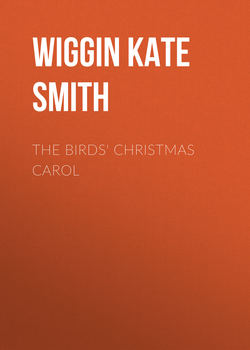Читать книгу The Birds' Christmas Carol - Wiggin Kate Douglas Smith - Страница 3
III
THE BIRDS' NEST
ОглавлениеCarol herself knew nothing of motherly tears and fatherly anxieties; she lived on peacefully in the room where she was born.
But you never would have known that room; for Mr. Bird had a great deal of money, and though he felt sometimes as if he wanted to throw it all in the sea, since it could not buy a strong body for his little girl, yet he was glad to make the place she lived in just as beautiful as it could be.
The room had been extended by the building of a large addition that hung out over the garden below, and was so filled with windows that it might have been a conservatory. The ones on the side were thus still nearer the Church of Our Saviour than they used to be; those in front looked out on the beautiful harbor, and those in the back commanded a view of nothing in particular but a narrow alley; nevertheless, they were pleasantest of all to Carol, for the Ruggles family lived in the alley, and the nine little, middle-sized, and big Ruggles children were a source of inexhaustible interest.
The shutters could all be opened and Carol could take a real sun-bath in this lovely glass house, or they could all be closed when the dear head ached or the dear eyes were tired. The carpet was of soft gray, with clusters of green bay and holly leaves. The furniture was of white wood, on which an artist had painted snow scenes and Christmas trees and groups of merry children ringing bells and singing carols.
Donald had made a pretty, polished shelf, and screwed it on the outside of the foot-board, and the boys always kept this full of blooming plants, which they changed from time to time; the head-board, too, had a bracket on either side, where there were pots of maiden-hair ferns.
Love-birds and canaries hung in their golden houses in the windows, and they, poor caged things, could hop as far from their wooden perches as Carol could venture from her little white bed.
On one side of the room was a bookcase filled with hundreds—yes, I mean it—with hundreds and hundreds of books; books with gay-colored pictures, books without; books with black and white outline sketches, books with none at all; books with verses, books with stories; books that made children laugh, and some, only a few, that made them cry; books with words of one syllable for tiny boys and girls, and books with words of fearful length to puzzle wise ones.
This was Carol's "Circulating Library." Every Saturday she chose ten books, jotting their names down in a diary; into these she slipped cards that said:—
"Please keep this book two weeks and read it.
With love, Carol Bird."
Then Mrs. Bird stepped into her carriage and took the ten books to the Children's Hospital, and brought home ten others that she had left there the fortnight before.
This was a source of great happiness; for some of the Hospital children that were old enough to print or write, and were strong enough to do it, wrote Carol sweet little letters about the books, and she answered them, and they grew to be friends. (It is very funny, but you do not always have to see people to love them. Just think about it, and tell me if it isn't so.)
There was a high wainscoting of wood about the room, and on top of this, in a narrow gilt framework, ran a row of illuminated pictures, illustrating fairy tales, all in dull blue and gold and scarlet and silver. From the door to the closet there was the story of "The Fair One with Golden Locks;" from closet to bookcase, ran "Puss in Boots;" from bookcase to fireplace, was "Jack the Giant-killer;" and on the other side of the room were "Hop o' my Thumb," "The Sleeping Beauty," and "Cinderella."
